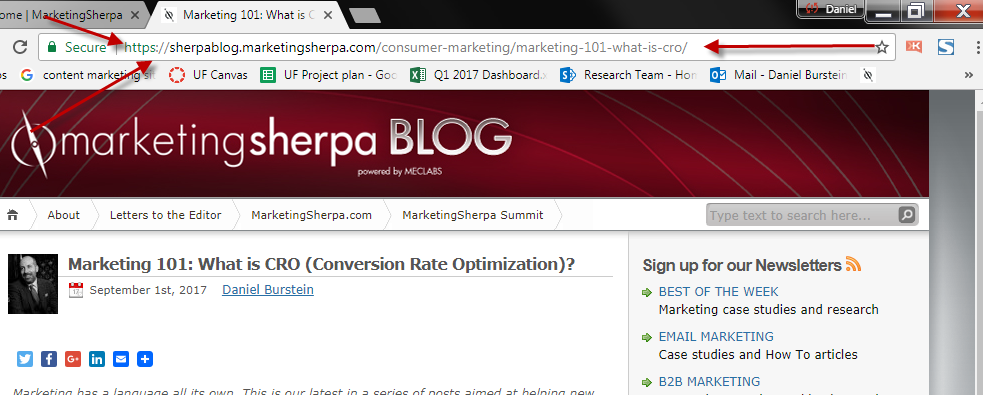Marketing 101: What is a vanity link (or vanity URL)?
Marketing has a language all its own. This is our latest in a series of posts aimed at helping new marketers learn that language. What term do you find yourself explaining most often to new hires during onboarding? Let us know.
A vanity link is a URL that is in plain English and very easy for a potential web visitor to type in. URL is an acronym for Uniform Resource Locator — the webpage address. Every page on the World Wide Web has a URL, even this one. To find the URL of any webpage, simply look in the browser bar at the top.
Vanity links make it easier for people to visit your landing pages
If you’re sending people to a landing page, blog post or online article from a webpage, it’s easy enough to use a hyperlink — like this — to allow your visitors to click and visit the other page.
However, there are times when you would like to create a call-to-action to a webpage that readers or listeners will actually have to type into a web browser themselves. An example might be a TV or radio ad. Or a print advertisement. For this reason, a vanity link isn’t technically a “link” at all, but rather a URL (i.e., the web address).
For example, the URL for our customer satisfaction study is fairly easy compared to some URLs: http://www.marketingsherpa.com/freestuff/customer-first-study
However, why put that on the customer? It’s in the “Free Stuff” section of MarketingSherpa, so that’s why those words are in the URL. But why make the customer type that in? Or even the hyphens between “customer” and “first” and “study.” The HTTP and www aren’t necessary either.
When we wanted to direct someone to that website and couldn’t use a link, we created this simple vanity URL: MarketingSherpa.com/ConsumerStudy
Notice how much easier that is to type in and remember. Also notice the camel casing — I made the first letter of each word a capital letter so the URL is easier to read and remember, although visitors could type the URL with all lowercase letters and still get to the webpage.









